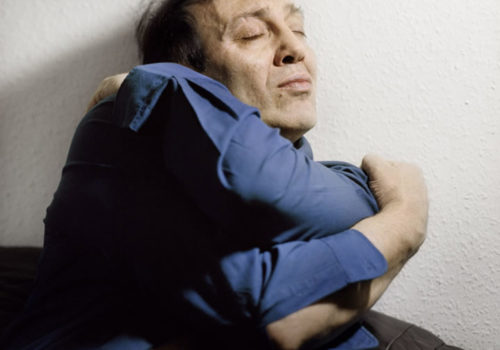The images are constructions of theatricality and outline the affective logic of dramatic emotion. The isolation of the emotional state of emergency is a constant stylistic device of the photographs as the room does not know a vis-à-vis, no addressee who could benefit from the relinquished gestures of absolute expression; providing no hold, often not even an outline for the emotional instability: the walls do not resist mental rhetoric, but outline it and generate gestures and poses, which are confirmed as symptoms through nomination.
The work focuses on the very moment, in which a gesture freezes to become a pose. The photographed bodies and faces are therefore to be understood as an arena for an emotional debate between face and mask. The bodies function as an excavation site for physical and mental emotions. Therefore the portraits rather portray an ambiguity of mental expression, than function as a likeness.
Through Photography, the moments of mental expression are fused into a representational form, that is ever aware of the reciprocal interaction between body and mind. In this way, the works emerge as documents of an anthropological status report.
Valerie Schmidt, 29 years old, german
living and working in Berlin and Düsseldorf
2002-2009 Photography studies at Folkwang Hochschule Essen
2007 Erasmus scholarship at the National Academy of Arts, KHiB, Bergen, Norway
2009 interdisciplinary scholarship „Feldstaerke International 2009“ to Paris, Essen, Valencia, California
2009 Diploma with honours at Folkwang Hochschule Essen with Prof. Gisela Bullacher and Dr. Wiebke Leister
I was introduced to photography through a girl, I met at a party. She snuck around, taking pictures of the dancing people. I watched her move around, then she approached me, taking pictures of me with an easiness and impertinence, that impressed me.
I realised photography was a the perfect medium for me to portray people in all kind of situations. Before that, I drew, but as I wasn’t very good at it, I then started working with photography and found it most suitable to visualise my perspectives. Since then I focused my work on portraits.
















